One of the questions I get asked a lot is from left-handed people wondering if they can do calligraphy and lettering. My answer is always, “Yes,” and many lefties use my tracing guide worksheets to successfully learn brush lettering. There are always left-handed people in my workshops who make a few adjustments and can write beautiful letters too.
I also refer lefties to a number of very talented lettering artists online. One of these artists is Funda, of the @honeydarko team on Instagram, who creates amazing artistic videos and has a huge following and fan base. I am a HUGE fan and admire her calligraphy skills and works of art online. I was excited to meet Funda and Sandra of @honeydarko in Dubai last April when we were teaching workshops, and we had an enjoyable time talking lettering every chance we got.
While together there, I asked Funda if she would be interested in writing a blog post about being a left-handed lettering artist, and thankfully, she agreed. So here is a fantastic explanation of everything you need to know about writing letters as a leftie…..written by a leftie!
Advice for Lefties from Funda of @HoneyDarko
Amongst the questions that I receive the most from beginners are how left-handed people should approach the challenge of calligraphy and lettering and how I have managed to accomplish my lettering style. Note that there is nothing to stop a left-hander from doing great left-handed calligraphy and lettering. I will try to go over some obstacles and give you a couple of tips and tricks on how to become a better calligrapher and letterer as a leftie.
There are three ways that left-handed calligraphers and letterers choose to hold their brush pens.
Overwriters or “hookers” – curl their hand around the brush pen and therefore write below the hand. “Horizontal writers” – let their hands creates a 90 degree angle with the writing line. Underwriters – let their hand rest below the writing line and write above the hand.
See the images below to give you a better idea of the different ways to hold your brush pen.
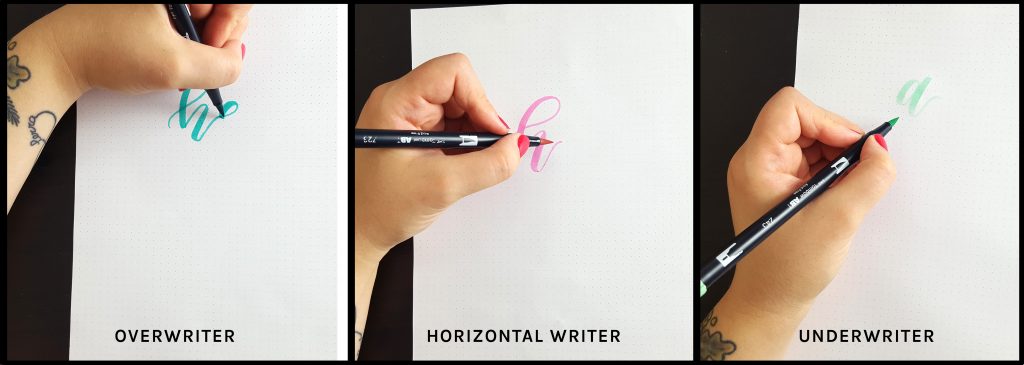
I am personally a horizontal writer (most of the time) when it comes to brush lettering. Depending on the thickness of the tip, I tend to vary between being a horizontal writer and an overwriter. When I do pointed pen calligraphy however, I am an underwriter.
It is important for everyone to choose a position which will be comfortable for them. You need to make sure that you are able to get the thick downstrokes and the thin upstrokes with your selection of grip. So try out the different ways and choose the grip that feels best for you. Remember that this might be completely different from your grip when writing with a regular pen or pencil (which is completely fine). Please keep in mind that brush lettering is also difficult for right-handed people!
There are three major obstacles that we need to tackle as left-handed calligraphers (depending on how you hold the pen).
1. Smudging/Smearing – Smudging might be the most annoying part when you are a left-handed calligrapher. I remember the days when I completely gave up on brush lettering just because of it. In the end, who wants to have their piece ruined due to the fact that you are a left-handed? But don’t be discouraged by this as there are a couple of tips and tricks that you can use to eliminate this obstacle.
If I am preparing a custom order with a lot of writing, I tend to rest my hand on a piece of tracing paper while using my brush pen. This way, it is the tracing paper that touches the ink and not my hand. You still need to be careful so you do not put a lot of pressure on the tracing paper, as that also will smear the text.
You can also eliminate the smearing by writing slowly. Different types of papers will absorb the ink at different speeds and some brush pens have more ink in them compared to others, which means that it will take longer for the writing to dry. I have found that soft cardstock paper or marker paper absorb the ink quicker than for instance Rhodia paper or HP premium laserjet paper. However, the latter mentioned papers are recommended for brush pens as they are nicer smooth surface that preserves the tips of the brush pens. It is all about finding your way around the obstacles.
There are also specially designed gloves that you can wear that stops you dragging the ink across the paper which is a very cool tool. I have seen a couple of calligraphers using them but have not tried it myself. YET!
Spacing is especially a problem if you are an overwriter or a horizontal writer. Because we are writing from left to right, your hand will eventually cover the text that you have just written which can cause problems for keeping the consistency. Consistency in general is difficult even for right-handed people. What you need to do to eliminate this problem is to practice a lot and build up your muscle memory. If you are trying to write on blank paper, you can use lined paper beneath to keep the consistency of the size and keep your lines straight. If you are using a thicker blank page, that won’t show your lined sheet beneath, you can use a lightbox or draw your lines directly on the paper as help (you can erase the lines when your piece is completely dry).

The easiest way to do this for both an overwriter and a horizontal writer, is to turn the paper minus 30-45 degrees (tilting it to the left). Don’t be afraid to rotate the paper until you find your perfect angle! An overwriter will use the same pressure technique as a rightie, which is, applying pressure on downstrokes and releasing pressure on upstrokes.
To continue to practice is probably the best advice I can give to both left and right handed calligraphers and letterers. As I mentioned previously, I did give up myself in the beginning because I could not see the results that I wanted to see and my style looked nothing like the calligraphers and letterers that I was admiring. Do not compare yourself to other artists and do not think that your style won’t improve, because it will. One of my favourite quotes on this matter reads “Do not compare your beginning to someone else’s middle.”
You have to give it time and you have to keep on practicing. If you are a beginner, you can start by using worksheets, just to get used to the different brush strokes. When you feel like you can control the brush pen, you can move on to develop your own style.
There are a lot of talented left-handed calligraphers and letterers out there, so don’t think of being left-handed as a disability. Remember that every obstacle you overcome will only make you better and improve your skills. Continue on practicing and be stubborn, but also remember to have fun! Getting introduced to brush lettering and calligraphy was one of the best things that has ever happened to me. I would definitely recommend it to everyone.
I hope this post has been helpful and will minimize the struggle of being a left-handed calligrapher. Happy lettering!
xoxo Funda
Follow Funda and Sandra, the dynamic duo behind @honeydarko on Instagram!

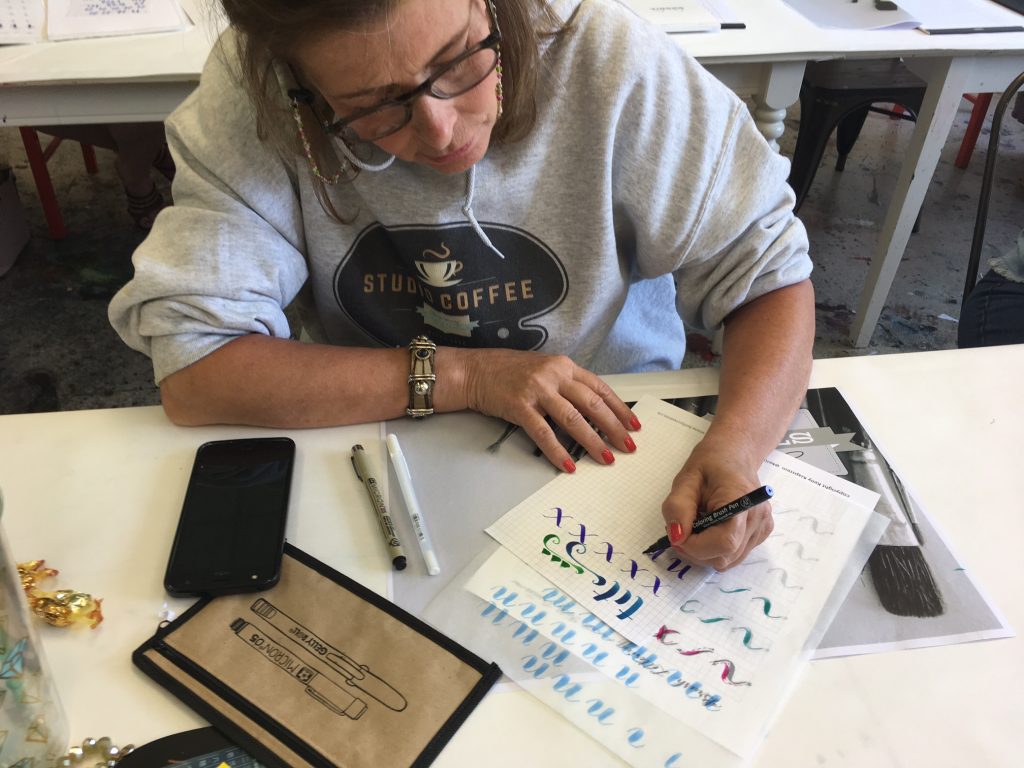

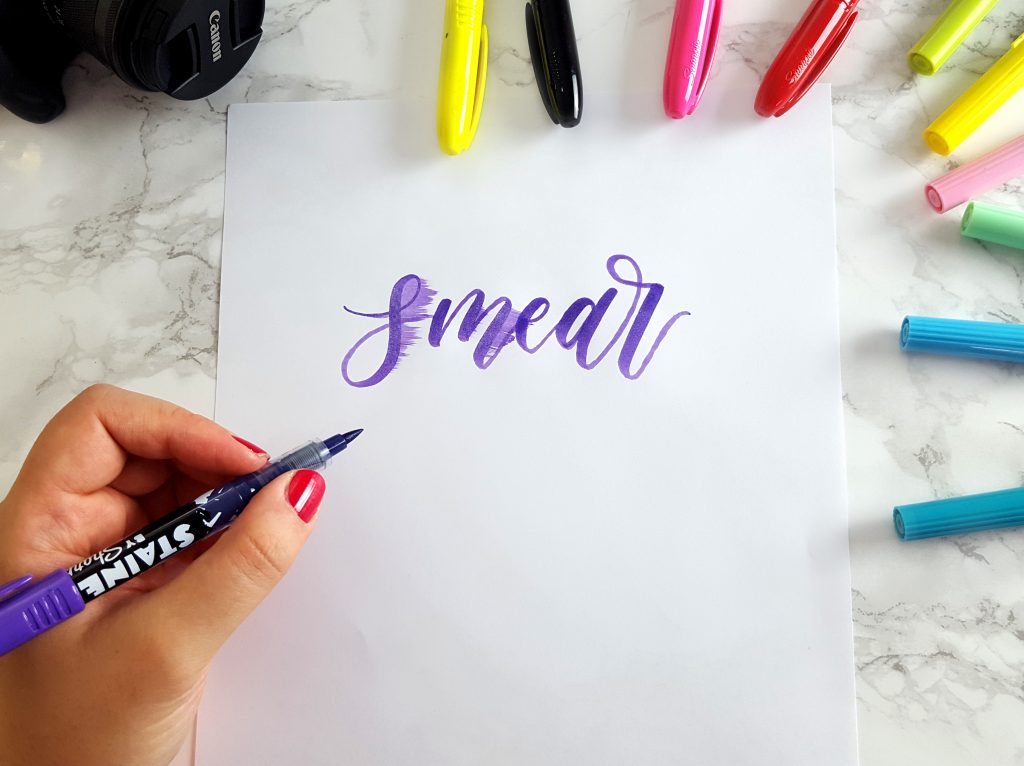
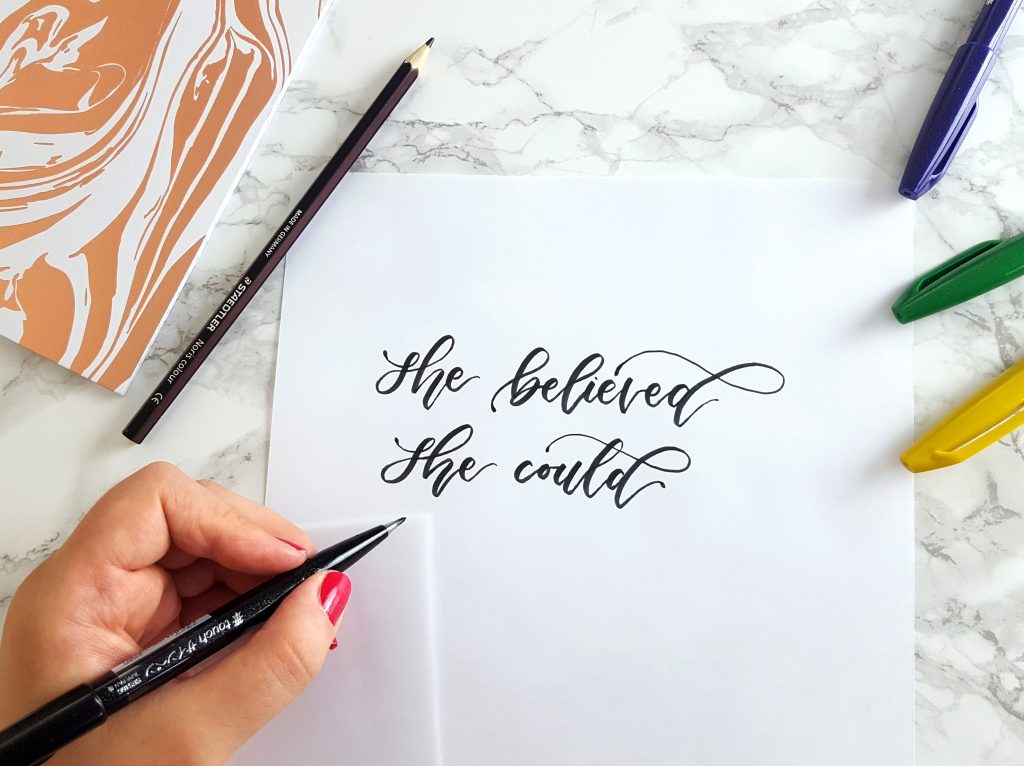

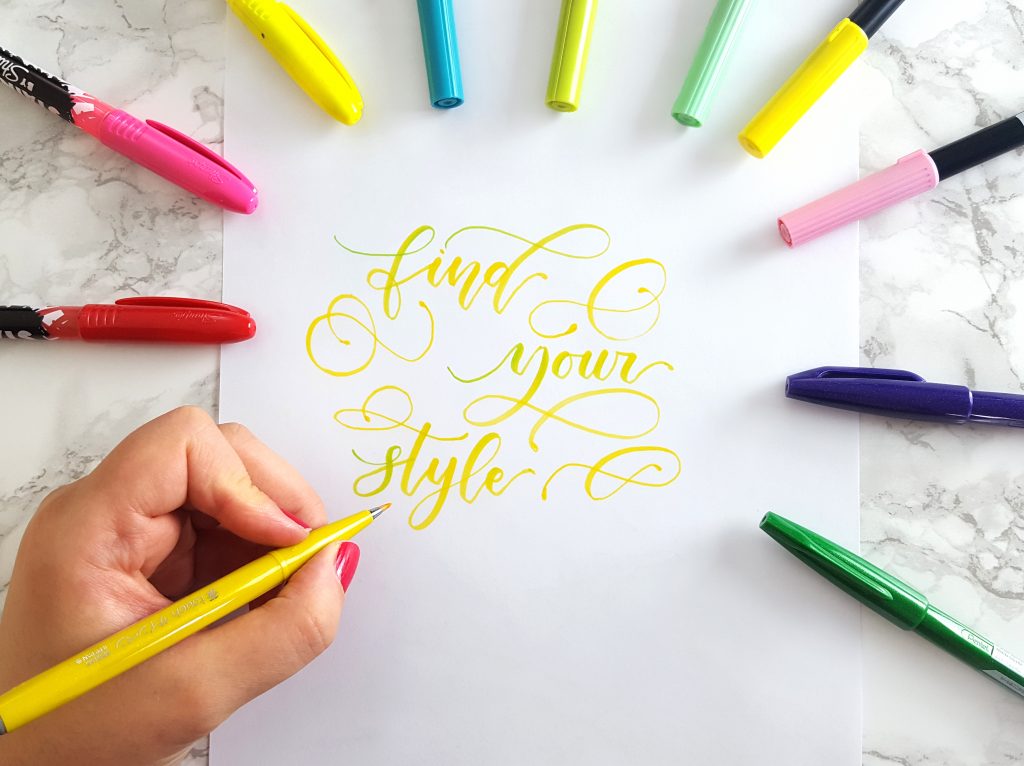

Anna
July 4, 2017 at 11:23 am (7 years ago)Great post!! I’m a leftie, just started brushlettering and I’m struggling with all the troubles mentioned 🙂
Helen Scruton
February 26, 2021 at 10:44 am (3 years ago)Can you use blotting paper to stop it from smudging?
Kelly
March 4, 2021 at 12:02 pm (3 years ago)Probably….give it a try!